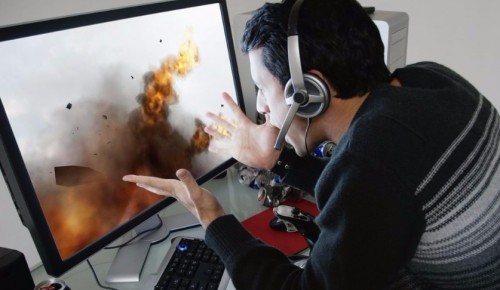
How will 5D disks change the way people think about storing information? Scientists have created the highest-density 5D disk. In October, specialists at the University of Southampton in Britain described a way to record huge amounts of data on a small-sized compact disc. The technology, called 5D, allows saving up to 500 terabytes of information on a special drive. The resulting disk made of quartz glass is characterized by the highest density, which is ten thousand times higher than the density of optical Blu-ray disks. The new method will effectively accommodate a small area of cloud servers to store data users, Internet companies, large corporations. According to scientists, it is especially important against the background of technological development, increase in the number of devices connected to the network and the growth of the amount of data transmitted through the network.
Cloud services are becoming more and more popular every year
Over the past five years, the attitude of consumers and business towards cloud services has changed. Previously, they were perceived as an additional method of data backup – information was almost always received in one direction. And large corporations mostly used data centers to store non-critical information. By the 2020s, organizations began using cloud servers not only for emergency backups, but also for ongoing data sharing within a particular enterprise. Cloud storage systems have become more flexible, allowing the individual consumer to choose the amount of available space and hardware performance needed.
Analytics Insight experts call the main advantages of cloud data centers 24/7 access to information, the ability for multiple users to simultaneously work with one data array, scalability and flexibility, and reduced costs for data storage within the company.
Representatives of the industry point out that the load on servers is usually uneven: in one part of data centers it can be off the charts, while in another part it can be extremely small. For this reason, experts predict the emergence of artificial intelligence, which could analyze and distribute the load on the equipment. This is also the reason why user data is stored in several parts of the data center.
5D drives will allow information to be stored almost indefinitely
Forbes estimates that by 2025, about 80 billion devices will be connected to the Internet, generating about 180 trillion gigabytes of data. For the foreseeable future, storing data on classic storage devices will be problematic – there is a risk of shortages and rising storage costs. Experts working on the 5D technology at the University of Southampton propose to record information on quartz glass using femtosecond lasers and ultra-short pulses. “The recording on the quartz carrier is as if it goes in five dimensions – two optical and three spatial,” the authors of the study note.
The innovation of the British engineers is to create high-density disks and place huge amounts of data in a small area. For example, on a “dummy” of the size of one inch was able to save six gigabytes of information. The typical size of a quartz disk drive can store up to 500 terabytes of data. The development promises to revolutionize the market of data storage, as dozens, if not hundreds of classic data centers can be combined into one library.
The advantages of 5D disks are also called longevity and low maintenance costs. Scientists estimate that quartz drives are no more durable than conventional drives, but can withstand temperatures up to 1,800 degrees Fahrenheit, or about a thousand degrees Celsius. In the event of a data center fire, the information would likely survive. In addition, the quartz glass does not change its properties over time, which will allow data to be kept on the 5D storage devices virtually forever.
The only bottleneck of the future development is the speed of data transfer. At the moment, scientists managed to speed it up to 230 kilobytes per second – during this time you can write about a hundred pages of text on the disk. However, it will take 60 days to completely fill a 500 terabyte disk. Either engineers will find a way around this restriction, or 5D disks will remain promising recording equipment. At the very least, data can be stored on such disks for posterity. For example, in 2018, Isaac Asimov’s trilogy of novels “The Foundation” was recorded on quartz media – the disk went into space with Elon Musk’s Tesla Roadster.




